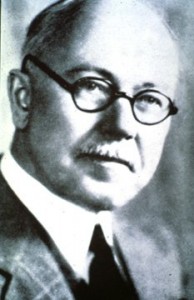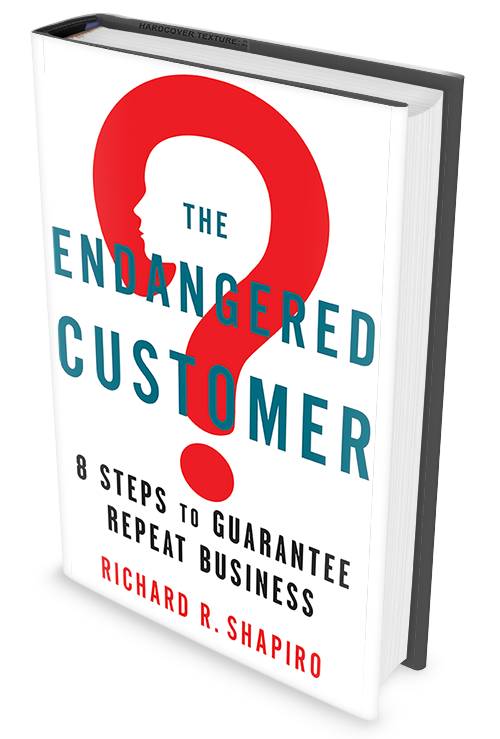I have added another blogpost related to HubSpot and new social media platforms. Take a look and thank you HubSpot:
http://growthstrategy.consulting/thoughts-from-hubspot-on-new-platforms/
I have added another blogpost related to HubSpot and new social media platforms. Take a look and thank you HubSpot:
http://growthstrategy.consulting/thoughts-from-hubspot-on-new-platforms/
 In this short chapter, Claude Hopkins talks to service as a viable advertising strategy. He argues that they should, in today’s terms, provide value. He references that they should provide information, that they should educate, that they should cite advantages to the user, and that they should do what they can to eliminate risk on the part of the consumer. Does this sound familiar to us? I would think that it should.
In this short chapter, Claude Hopkins talks to service as a viable advertising strategy. He argues that they should, in today’s terms, provide value. He references that they should provide information, that they should educate, that they should cite advantages to the user, and that they should do what they can to eliminate risk on the part of the consumer. Does this sound familiar to us? I would think that it should.
He provides several examples in this short chapter about how a salesperson might act in the situation. As you will remember, Hopkins considered advertising to be salesman in print. He had little or no use for advertising that did not advance the sales process, or as we would say today, the customer journey. He was concerned that advertising people sought to advance their own agenda and “spoke to their own interests” rather than to those of their customers.
Today we speak of choosing a target audience and speaking to that audience in a manner they can relate to. This would make sense to Hopkins.
That said, there is a great deal of discussion around how targeting and personalization are defined. The reality is that in most instances, we do not have enough accurate information around any given consumer to completely personalize. But we can base our communications on what we do know about that person. It often starts with demographics, and then proceeds onto to behavioral and psychographic data, depending on how much information the consumer is willing to volunteer. Using our own data and experience with a person is often a better point for starting a dialog than buying targeted profiles, although we may need to do this to get started and to expand our audience.
And this would also have appealed to Hopkins. He felt that “people can be coaxed but not driven.” A face-to-face sales encounter would have followed a pattern but would also have varied person to person that the salesperson encountered. Again…not all that dissimilar to what we are trying to do today.

When we last visited Claude Hopkins, I indicated we would pick up with his second chapter of his book “Scientific Advertising”, which is based on salesmanship. In this chapter he also speaks to an extent to understanding and building a relationship with the customer.
While the language is somewhat out of date, I do think the thinking behind the language fits in well with our current digital world thinking on relationship building, personalization and getting to know the customer.
Initially he indicates that advertising is salesmanship, and that the “only purpose of advertising is to make sales”. He further argues “that it is not to keep your name in front of people” There are some other thoughts that he expresses, but it is obvious that he is a direct marketer and did not think much of institutional advertising.
I agree with this. But he also goes on to talk about the way that that is accomplished: through thinking of customers as people and taking their perspective, not your own. In his own words: “Don’t think of people in mass…think of the typical individual that you would want to sell” and “The advertising man (or woman) studies the consumer. He tries to place himself in the place of the buyer.” He felt that ads were often written more to please the seller than the buyer. Claude always believed the buyer (or the customer) should come first.
This is very much in keeping with what we try to accomplish today with much better tools than Claude ever had. According to emarsys, “There are 3 strategic objectives that digital marketers need to set and measure in order to generate revenue.
The 3 strategic objectives are:
They argue that everything we do should be oriented to one or more of these objectives. As we work through Claude, we will see that he would appreciate this thinking. All three objectives align with points that he makes related to direct marketing. Advertising should be convincing and that the appropriate points must be made at the appropriate point in the sales cycle.
Next time we will look at Claude’s views on service…
Emarsys (n.d.) 3 Strategic Goals Of Digital Marketing. Retrieved from: https://www.emarsys.com/en/resources/blog/3-strategic-goals-digital-marketing-ohad-hecht/
A little over two years ago, I posted an article on LinkedIn called “What Claude Hopkins Knew 100 Years Ago” – https://www.linkedin.com/pulse/what-claude-hopkins-knew-100-years-ago-mark-tietbohl/

One of the reasons that I wrote this article at the time was that Claude Hopkins was an amazing man, especially from an advertising and marketing perspective. His book, “Scientific Advertising” still makes sense today. While the techniques today are certainly different, he would have understood agile and he would have understood viral and growth hacking. I suspect he would have loved living in the digital advertising environment we have today. I intended, at the time, to create a series of articles on the book, comparing his thinking to what we see today in digital. I never did get there, but this time around, I hope to highlight the thinking he developed over his career and finally put into print in 1923.
David Ogilvy once said “Nobody should be allowed to have anything to do with advertising until he has read this book seven times. It changed the course of my life”. While the quote above needs to be taken in the context of David’s time, I think it is still accurate.
I was first exposed to this book in college. Honestly, I was too young at the time. I read it but really did not “get it”. Later, another remarkable man named Jay Abraham mentioned this book on several occasions. I went back and read the book again (along with “My Life in Advertising”) and found I was much more receptive this time around.
(FYI…for those of you not familiar with Jay Abraham, he is another marketing mind well worth checking out. I have read his books and articles, listened to his audio tapes, listened to his podcasts and watched his videos. He has had a major impact on my business process and my perception of how marketing should be done.
Jay is incredibly expensive to hire, but he is also very giving. He provides a great deal of free or inexpensive content for the rest of us…. I strongly suggest that you check this link, 50 Shades of Jay https://www.abraham.com/50shades/ to get a taste what he is all about.)
But, back to Claude…
In the opening chapter of the book, he indicates that “advertising is not risky”, that there has been documentation on what works and what does not, and “we can learn the principles and prove them by repeated tests”. He was of course referring to mail order and print advertising, but this is essentially the rallying cry of digital. He was a strong advocate of couponing and versioning and measuring the results that were achieved while testing variations.
He also recognized that individual campaigns must be different, and that “no two campaigns are conducted around lines that are identical”. This is something that we all need to hear more frequently today. More often than not, I will hear that a specific (tactical) approach should be taken because it worked for Brand X. I also hear that personas that we have should align with personas developed by Brand X. Neither of these are likely to be true as we should have our own brand position and target audience out there in the market. Claude understood that ”me too” rarely worked, and that while you needed to understand the basic principles, every brand needs to forge its own path. This is very much aligned with the differentiation and relationship selling we all talk about today.
We have come full circle in some respects. Digital is also direct marketing. We stepped away from this in the days of big media, broad messaging and push advertising. “Most national advertising is done without justification. It is merely presumed to pay. A little test might show a way to multiply returns” – Claude C. Hopkins
But 1:1 was something that Claude would understand. In fact, my next article will be how he compares advertising to salespersonship.
 I have been posting quite a bit on LinkedIn and Twitter about artificial intelligence and machine learning, including bots, personal digital assistants and smart home. I have speculated on what the smart phone of the future might look like, especially with advancements in wearables and implants.
I have been posting quite a bit on LinkedIn and Twitter about artificial intelligence and machine learning, including bots, personal digital assistants and smart home. I have speculated on what the smart phone of the future might look like, especially with advancements in wearables and implants.
I would love to hear the thoughts of readers of this blog or if you would like to share articles you feel strongly about in these topics. I hope you will share your thoughts with me.
A couple weeks back, I had the distinct pleasure of meeting and having lunch with Richard R. Shapiro. We were introduced by a mutual trusted friend, and I knew initially that Richard was a customer experience guru, but very little else. We had communicated and uncovered a common New Jersey connection, and of course, I had checked out his web site (http://tcfcr.com/about-richard-r-shapiro/ ) and LinkedIn profile.
While what I had learned about Richard was truly impressive, it in no way prepared me for the wonderful experience of having lunch with him. At the end of our meeting, he  provided me with a copy of his latest book, The Endangered Customer: 8 Steps to Guarantee Repeat Business. Since I had met and spent time with the author, I could hear his voice in my head as I read. But I assure you, that is not necessary to learn from this book.
provided me with a copy of his latest book, The Endangered Customer: 8 Steps to Guarantee Repeat Business. Since I had met and spent time with the author, I could hear his voice in my head as I read. But I assure you, that is not necessary to learn from this book.
Put simply, the book is well worth the read, even if you consider yourself to be a customer service maven. The “thought provoking questions” in Appendix 2 alone are worth making the effort.
As a starting point, I will list the 8 (important) steps that form the basis of his book:
Most of these may seem obvious to people who have been involved in either B2C or B2B customer and client relationships, so instead of further elaboration, I will recommend reading for Richard’s perspective on these points, a perspective that is very clear and somewhat unique in this day and age when we seek to distill everything into a formula.
There are, however, a couple of the points he made throughout the book, I would like to elaborate on.
The most important point overall is that Richard speaks to all the customer annoyances, both large and small, that can undermine or break a relationship with your organization. In essence, this is really the focus of each of the eight points above. Often these annoyances go unnoticed.
Many organizations feel today that technology can be substituted for human contact, emotion and thought. There certainly is a place for machine technology (AI or machine learning, historical databases) to supplement and support the human-to-human experience, but at this point, the human factor cannot be completely replaced. Nor should it be. So, while marketing automation and CRM can be incredibly valuable tools, they also cannot yet be put on autopilot and allowed to run the show.
This is how we end up with communications with no personality…and communications that make no sense…and communications that fail to build relationships with our customers.
I have seen that even younger generations than myself enjoy human contact, although expectations and tone are very different. All generations still have respect for people who know “things” and can add the additional information into the mix that make the experience better and at the same time, make them feel important and like they have choices.
And it is not just customers that are important: The importance of employees to the mix of relationship building cannot be underestimated. Not only do highly adaptive employees keep the organizations vibrant, but they add to customers feeling connected and add to the continuity of the relationship. Key employees must not be viewed as a cost, but as a resource. These resources, like any other organizational resources, should be protected and cultivated, and allowed to grow and develop.
With this in mind, cultivating long term employees to aid with the customer journey is also a must for most organizations, especially employees that frequently interact with their customers. Long term employees are typically better able and equipped to say “yes” or at least, not say “no”. As Richard points out: “Even when you cannot say yes, you must never say no. Tell customers what you can do, not what you can’t do.”
Employees at the end of the sales process (especially in retail) often determine whether the customer leaves feeling like they had a good, neutral or bad experience. Your front-line team must be able to recognize the signs and empowered to act on this. I have personally seen this in practice first hand, and have seen how much impact to build or save a relationship that a cashier can have, especially one with a level of authority to rectify a situation or at least the mandate to display empathy.
Finally, remember the entire product or service life cycle or what we often call today, the customer journey. Many organizations are great at developing leads, many do an excellent job at point of sale (or bringing the sale to a point of close). Fewer organizations recognize the need for further building the relationship after the sale. This is often because they do not fully grasp the concept that repeat business is better ensured when the relationship is appropriately continued.
All too often when attempted, the effort is a perfunctory thank you email, more efforts to sell additional products or services, or nothing at all. And these contacts often do not provide time for the customer to properly evaluate their decision nor do they fit with the usage cycle.
True relationship builders recognize the value of building customer loyalty after the sale; in other words, closing the loop with our new friend, the customer. Invite the person to return before breaking contact during the sale and tell them how to do it, including how to contact you. Tell them in advance what to do if they have a problem or concern. Make sure to follow up after resolution if they do have a problem or concern. An example from the book highlights a wedding shop that calls after the wedding to see how the event went, and if the bride received compliments and is still pleased with her choice.
This discussion only scratches the surface, as the book is short but also highly compact. There is a great deal packed into this short book, and Richard is an amazing storyteller. I can only state that you should make the effort to pick up and digest this great book.